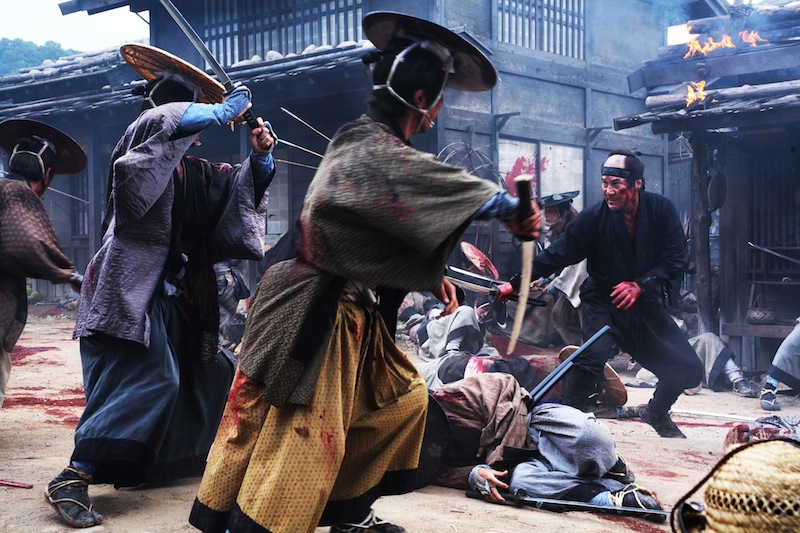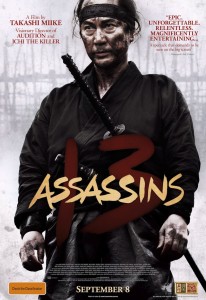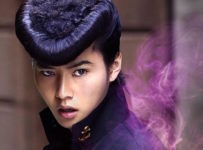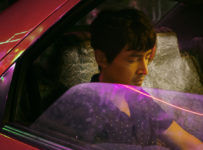Director: Takashi Miike
Runtime: 141 minutes
Starring: Koji Yakusho, Takayuki Yamada, Yusuke Iseya
Distributor: Icon
Country: Japan
Rating: Certified Bitstastic (?)
Know for his violent excesses of Audition and Ichi the Killer, Takashi Miike has often been unfairly labelled the ‘Tarantino of the East’, a moniker that insults them both.
A highly prolific filmmaker, Miike is credited with fifteen films in 2001 and 2002 alone, his career has not been without controversy, with his Masters of Horror anthology episode (Imprint) held back from screening on the otherwise adventurous Showtime cable network. Balancing his violent side out is one of kinetic youthful energy, seen in the more recent Yatterman. Yet is seems that it was the chanbara genre (samurai cinema) that was the most logical fit for Miike, for it is with 13 Assassins that he creates one of his first masterpieces in years.
In 1830s Japan, the wicked Lord Matsudaira Naritsugu (Gorô Inagaki) terrorises the people, using his status as the former Shogun’s son and the current Shogun’s brother as immunity. When master samurai Shinzaemon Shimada (Kôji Yakusho, The Summit: A Chronicle of Stones) is summoned to assassinate Lord Naritsugu, he gathers together a group of elite samurai to undertake the task.
Ostensibly a remake of Eiichi Kudo’s 1963 film, with seemingly heavy influences from Akira Kurosawa’s Seven Samurai, Miike’s film begins with the epic grandeur of many other chanbara films, before he quite literally unleashes all hell in a trademark 45-minute battle sequence that may be the samurai fight to end them all. Filled with flaming cattle, exploding buildings and torrents of blood, it is also beautifully shot (by The Summit’s Kimura Daisuku), impeccably cast and filled with period detail.
Just when you think Miike has cashed all of his cheques, another battalion will emerge to extend the bloody mayhem in spectacular, hyper-realistic style that only Miike could deliver. The CG is used sparingly during these sequences, and it’s just as well: some of these moments are the weakest in the film, if only because the less-than-perfect special effects occasionally take us out of the otherwise impeccably detailed moment.
Yet his hyper-violent sequence would not work if Daisuke Tengan’s (The Most Beautiful Night in the World) screenplay had not set up the world and its characters so perfectly. Shinzaemon is the classic stoic samurai, carved from the earliest of stories and transplanted wholesale into this modern take on the genre. The two-hour running time naturally doesn’t allow for all characters to be fleshed out, especially the intriguing character of Kiga who also seems to be drawn from Seven Samurai, but to dwell too long on this would be to miss the point.
This international cut removes 20 minutes from the film, allegedly set inside a brothel just prior to the battle. So far, English-language home releases have not corrected this, but the scenes are available on various DVDs and Blu-rays for the curious. It is a shame that this film was edited, but it was done so with the director’s blessing, and it is difficult to feel too disappointed when the end product is this good.

13 Assassins is released on 8 September 2011 in Australian from Icon.






I read a report from NYAFF that indicated that the deleted scene was a pretty icky, tone-breaking comedic moment that was better left out. In any case I’m absurdly excited about this one – especially after having watched Audition recently and seen just how good Miike can be at framing shots and directing performances.